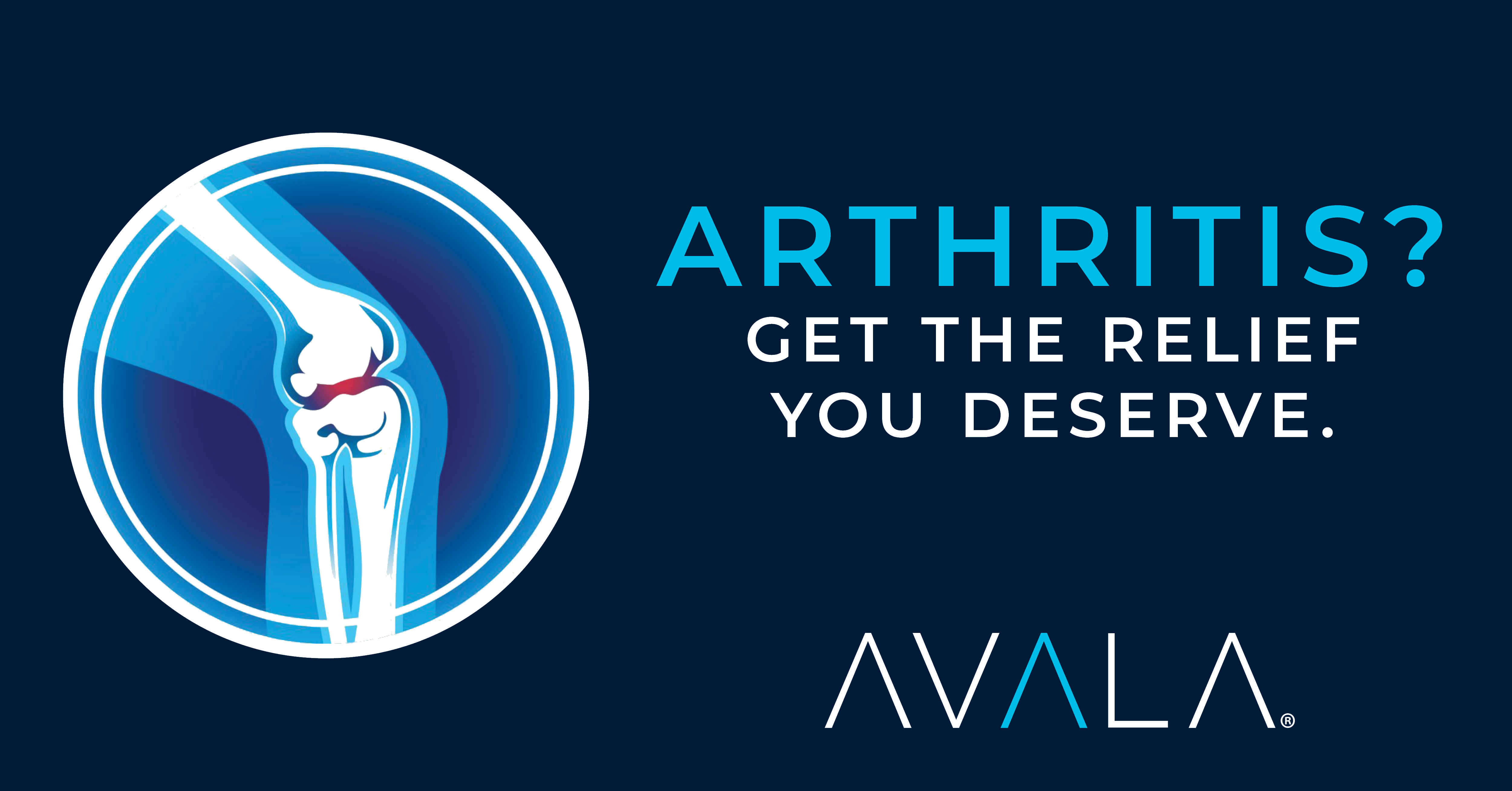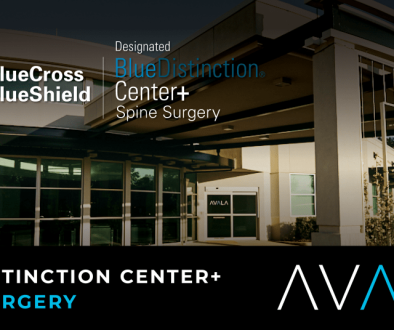Arthritis? Get Relief.
What is Arthritis?
Common arthritis symptoms of pain and stiffness are usually caused by degenerative arthritis (osteoarthritis). There are more than 100 types of arthritis which can include rheumatoid arthritis and gout. A diagnosis is necessary in order to develop a treatment plan.
Arthritis Symptoms
- Symptoms of osteoarthritis may include:
- Joint Pain
- Stiffness: When you wake up or after you’ve been sitting for a while.
- Tenderness: The area is sore when you touch it.
- Lack of Movement: The joint won’t complete its full range of motion.
- Grating: You might feel things rubbing together inside the joint.
- Bone Spurs: Lumps of bone form around the joint.
Treatment Options
Every patient is unique, and can experience joint pain for different reasons. It’s important to talk to your physician about the reason for your joint pain so you can understand the treatment options available to you. At Avala we offer Mako Robotic-Arm Assisted Technology to our patients who are in need of joint replacement surgery due to arthritis.
Mako Robotic-Arm Assisted Technology
Pain from arthritis and joint degeneration can be constant or come and go, occur with movement or after a period of rest, or be located in one spot or many parts of the body. It is common for patients to try medication and other conservative treatments to treat their hip or knee pain. If you haven’t experienced adequate relief with those treatment options, you may be a candidate for Mako Total Hip, Total Knee or Partial Knee replacement, which may provide you with relief from your joint pain.
How Mako Technology Works

Mako Robotic-Arm Assisted Technology provides you with a personalized surgical plan based on your unique anatomy. First, a CT scan of the diseased hip or knee joint is taken here at Avala Imaging Center. This CT scan is uploaded into the Mako System software, where a 3D model of your hip or knee is created. This 3D model is used to pre-plan and assist your surgeon in performing your joint replacement procedure.

In the operating room, your surgeon follows your personalized surgical plan while preparing the bone for the implant. The surgeon guides the robotic-arm within the pre-defined area and the Mako System helps the surgeon stay within the planned boundaries that were defined when the personalized pre-operative plan was created.
In a laboratory study, Mako Total Knee Technology demonstrated accurate placement of implants to a personalized surgical plan. This study also showed that Mako Total Knee replacement demonstrated soft tissue protection to the ligaments around the knee. In patient and laboratory studies on Mako Total Hip and Partial Knee replacement, Mako Technology demonstrated accurate placement of implants to a personalized surgical plan.
Total Knee vs. Partial Knee Replacement
Based on the severity of the arthritis in the knee, total or partial knee replacement may be recommended by a surgeon. Both procedures involve the orthopaedic surgeon guiding the Mako Robotic-Arm to remove diseased bone and cartilage.


Mako Robotic-Arm Assisted Partial Knee replacement is a treatment option for adults living with early to mid-stage osteoarthritis (OA) that has not yet progressed to all three compartments of the knee. Depending on where the arthritis affects the knee, patients may have an implant inserted in any of the following areas:
In comparison, Mako Robotic-Arm Assisted Total Knee replacement is a treatment option for adults living with mid to late-stage osteoarthritis of the knee. With Mako Total Knee replacement, the entire knee joint is replaced and the surgeon inserts a Triathlon Total Knee implant. With over a decade of clinical history, Triathlon knee replacements are different than traditional knee replacements because they are designed to work with the body to promote natural-like circular motion.
Total Hip Replacement
Mako Robotic-Arm Assisted Total Hip replacement is a surgical procedure intended for patients who suffer from non-inflammatory or inflammatory degenerative joint disease (DJD). Some forms of DJD include osteoarthritis (OA), post-traumatic arthritis, rheumatoid arthritis (RA), avascular necrosis (AVN) and hip dysplasia.




Who Performs the Robotic Surgery?
It’s important to understand that the surgery is performed by an orthopaedic surgeon, who guides the robotic-arm during the surgery to position the implant in the knee and hip joints. The Mako Robotic-Arm does not perform surgery, make decisions on its own, or move without the surgeon guiding it. The Mako System also allows your surgeon to make adjustments to your plan during surgery as needed.
WebMD. “Get Arthritis Health Center.” https://www.webmd.com/arthritis/default.htm.




